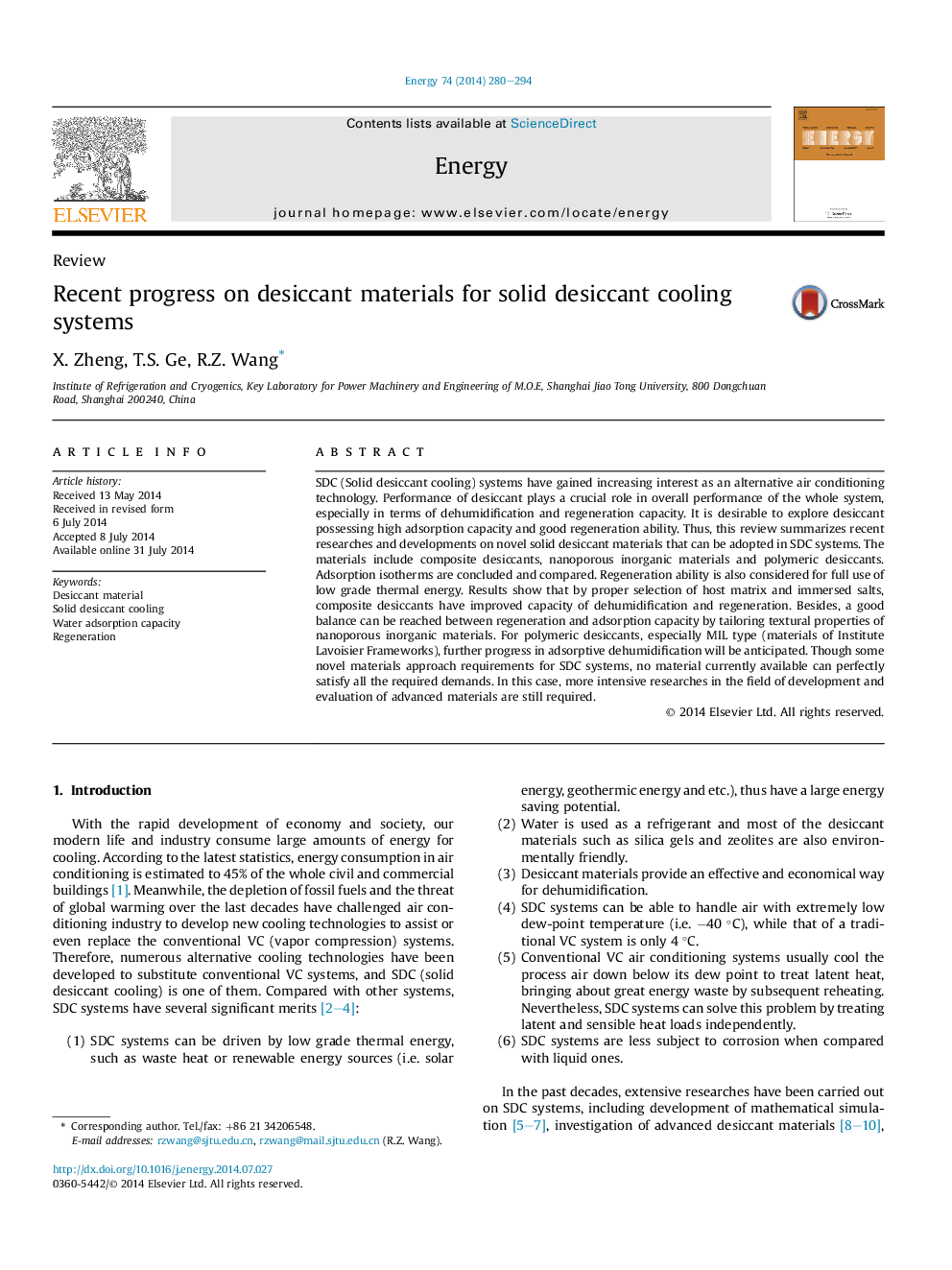| Article ID | Journal | Published Year | Pages | File Type |
|---|---|---|---|---|
| 1732462 | Energy | 2014 | 15 Pages |
•Recent progress on desiccants for solid desiccant cooling systems is reviewed.•Desiccants include composite, nanoporous inorganic and polymeric materials.•Adsorption isotherms of these materials are concluded and compared.•Regeneration ability is considered for full use of low grade thermal energy.
SDC (Solid desiccant cooling) systems have gained increasing interest as an alternative air conditioning technology. Performance of desiccant plays a crucial role in overall performance of the whole system, especially in terms of dehumidification and regeneration capacity. It is desirable to explore desiccant possessing high adsorption capacity and good regeneration ability. Thus, this review summarizes recent researches and developments on novel solid desiccant materials that can be adopted in SDC systems. The materials include composite desiccants, nanoporous inorganic materials and polymeric desiccants. Adsorption isotherms are concluded and compared. Regeneration ability is also considered for full use of low grade thermal energy. Results show that by proper selection of host matrix and immersed salts, composite desiccants have improved capacity of dehumidification and regeneration. Besides, a good balance can be reached between regeneration and adsorption capacity by tailoring textural properties of nanoporous inorganic materials. For polymeric desiccants, especially MIL type (materials of Institute Lavoisier Frameworks), further progress in adsorptive dehumidification will be anticipated. Though some novel materials approach requirements for SDC systems, no material currently available can perfectly satisfy all the required demands. In this case, more intensive researches in the field of development and evaluation of advanced materials are still required.
